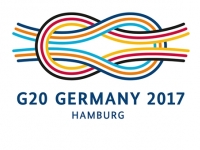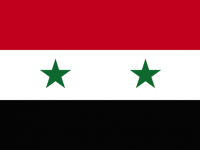Technology
The G20 Summit and chemical weapons in Syria
OPCW & FFM Issued a report

OPCW logo (Source: OPCW)
USPA NEWS -
On 29 June the Organisation for the Prohibition of Chemical Weapons´ (OPCW) Fact-Finding Mission (FFM) in Syria issued its report (S/1510/2017) concluding that sarin (or a sarin-like chemical) had been used at Khan Shaykhun (Idlib Governorate) on 4 April 2017. The attack prompted the United States to launch 59 Tomahawk cruise missiles against the Syrian Government´s Shayrat Air Base three days later. Syria, with active support from Iran and Russia, denied engaging in chemical warfare. The FFM´s report has now been transferred to the OPCW““United Nations Joint Investigative Mechanism (JIM) in Syria (based in New York) in order for it to establish and attribute responsibility for the attack. The FFM report, which was more broadly distributed on 30 June, is part of the growing body of information and analyses concerning the ongoing use of such weapons in the Syrian civil war which began in 2012. The UN Security Council and OPCW member states remain unable to agree Syrian Government responsibility for any of the continued instances of chemical warfare.
On 29 June the Organisation for the Prohibition of Chemical Weapons´ (OPCW) Fact-Finding Mission (FFM) in Syria issued its report (S/1510/2017) concluding that sarin (or a sarin-like chemical) had been used at Khan Shaykhun (Idlib Governorate) on 4 April 2017. The attack prompted the United States to launch 59 Tomahawk cruise missiles against the Syrian Government´s Shayrat Air Base three days later. Syria, with active support from Iran and Russia, denied engaging in chemical warfare. The FFM´s report has now been transferred to the OPCW““United Nations Joint Investigative Mechanism (JIM) in Syria (based in New York) in order for it to establish and attribute responsibility for the attack. The FFM report, which was more broadly distributed on 30 June, is part of the growing body of information and analyses concerning the ongoing use of such weapons in the Syrian civil war which began in 2012. The UN Security Council and OPCW member states remain unable to agree Syrian Government responsibility for any of the continued instances of chemical warfare.
While the FFM did not visit the site and could not determine the nature of the dispersal device, it did conclude that the deaths and casualties were caused by sarin (or a sarin-like chemical) emanating from a single crater. The crater has been the topic of intense discussion and debate as to what munition created it and whether the chemical warfare agent originated from it. The FFM established that the soil in the crater carried sarin, isopropylmethylphosphonic acid (IMPA), diisopropyl methylphosphonate (DIMP) and hexamine. Syria declared hexamine to the OPCW in its prior chemical weapon declarations. “˜Sarin-like´ may refer to the detection of the methylphosphonate functional group in the biomedical samples which, in turn, could theoretically derive from a sarin analogue based on a different alcohol.
Overall, the FFM based its conclusions on biomedical specimens, interviews and official and non-official reporting and analyses. FFM members were present at autopsies (probably carried out in Turkey). The information baseline included open sources. The selected open sources cited are mainly Twitter and YouTube videos.
The political fractures within the OPCW Executive Council (EC) and UN Security Council show no signs of easing. Iran and Russia, in particular, continue to reject any findings that point to Syrian Government responsibility for any chemical weapons use incidents. The majority of EC and Security Council members hold the position that the Syrian Government is responsible for some of instances of chemical weapons use.
The Group of 20 (G20) Summit will be held in Hamburg on 7““8 July. Russian President Vladimir Putin and US President Donald Trump have confirmed their attendance and will meet bilaterally. Will the FFM´s findings be placed on the G20 meeting agenda or might they be discussed at the margins? The summit will also consider trade and economic policies, and security and defence matters. Other topics will almost certainly include climate change, international sanctions against North Korea, and measures to bring longer-term stability to the broader Middle East (e.g. in post Islamic State (IS)-controlled territories, and consideration of measures to separate military forces in Syria, and to manage Arabian Peninsula tensions).
The G20 summit offers both opportunities and risks for managing expectations and reducing threats to international peace and security in the wider Middle East. Today (5 July) the EC will meet in special session to consider last Thursday´s (29 June) FFM report. The EC is likely to vote to endorse the report by majority vote. If so, this will represent a further departure from the principle of taking decisions by consensus within the multilateral disarmament and arms control treaty regimes (the EC took a decision on Syria on a majority vote last November). It remains for the JIM to attribute responsibility for the 4 April attack. Sure : SIPRI About the author Dr John Hart is a Senior Researcher and Head of the Chemical and Biological Security Project within the SIPRI Arms Control and Non-proliferation Programme.
Liability for this article lies with the author, who also holds the copyright. Editorial content from USPA may be quoted on other websites as long as the quote comprises no more than 5% of the entire text, is marked as such and the source is named (via hyperlink).







